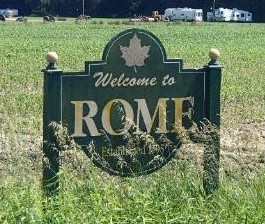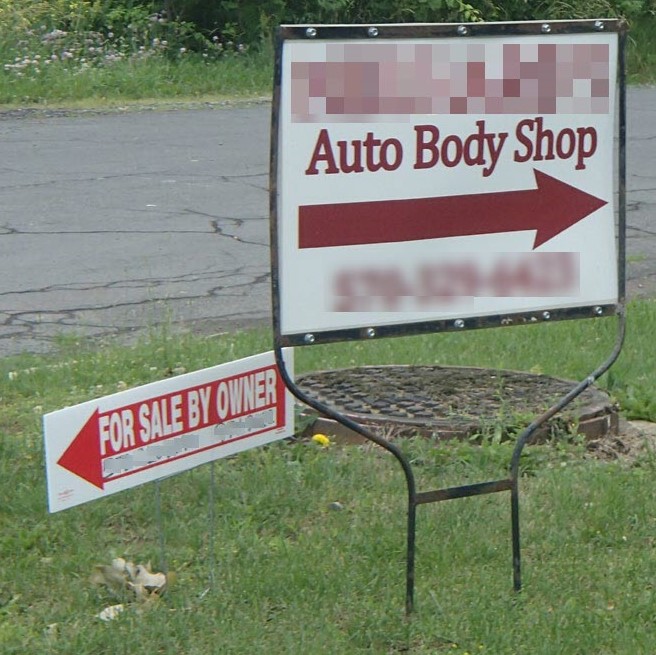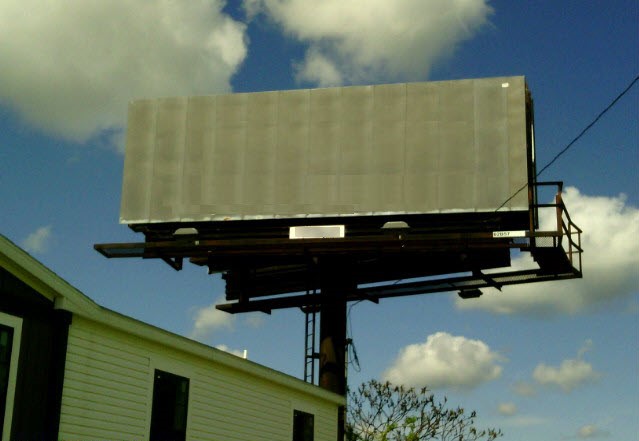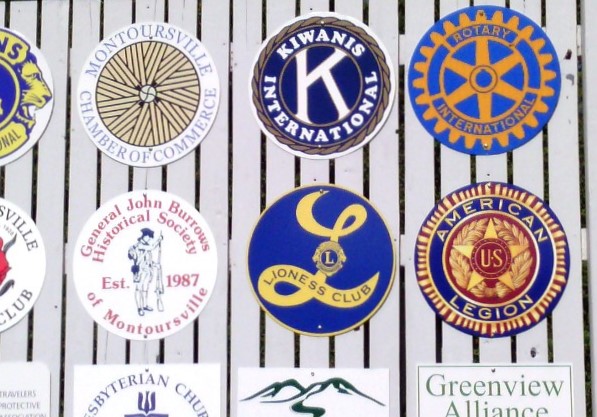Please see below for an explanation of the areas under the Department's control, an overview of each type of OAD, and the web map of affected routes.
Right-of-Way Defined
Right-of-way (ROW) is the real property rights obtained for a transportation-related facility funded under Title 23 of the United States Code. It can include shoulders, berms, and additional area needed for highway purposes. The size of the right-of-way varies between road segments and can be provided by PennDOT upon request.
Inside the Right-of-Way
For the most part, only official traffic control signs approved by the Department are legally allowed inside the right-of-way, including Logo Signs and Tourist-Oriented Directional Signs (TODS).
Additional signs that can be placed in the right-of-way with PennDOT approval include:
- Signs and banners approved by a resolution from the municipality that comply with PennDOT requirements given in Publication 46.
- Historical markers and custom municipal name signs that comply with Publication 46.
Other advertising devices found within the legal right-of-way may be removed immediately by PennDOT.
Outside the Right-of-Way
Signs on private land outside the right-of-way are regulated along controlled routes, which are interstates and highways in the enhanced National Highway System designated by the Outdoor Advertising Control Act of 1971.
In these areas, sign owners must obtain an outdoor advertising device permit from PennDOT. Applications for a permit can be submitted online through the Highway Beautification Management System (HBMS) or by mail. For more information, please read about the different types of OADs below and refer to the guidance in the Outdoor Advertising Control Outreach Guide.
Click the button below to see which roadways are controlled by PennDOT.
Types of Outdoor Advertising Devices
On-Premise Signs are erected on the same property as the operation being advertised within 100 feet of that operation on the same side of the road. On-Premise Signs do not need a permit for non-interstate routes, but all signs along interstate roads do require a PennDOT permit. When an On-Premise device is more than 50 feet away from the advertised activity and along an interstate road, its size may not exceed 150 square feet.
Off-Premise Signs are erected more than 100 feet away from the advertised activity, on the opposite side of the road of the advertised activity, or on a different property than the advertised activity. They must be within a commercial or industrial zoned area or within 800 feet of commercial/industrial activity if there is no zoning. If located along a Controlled Route, a permit is required and the structure will have to meet all the requirements of the Act.
Gateway Signs (or "Welcome To" signs) welcome visitors to a municipality. If they are in the right-of-way or along controlled routes, they must meet requirements for the size dimensions, message, lighting, and manufacturing.

Service Club and Religious Notices relate to meetings of nonprofit services clubs, charitable associations, or religious services. They have no permit fees or zoning requirement if their size is within eight square feet and an application submitted to PennDOT is approved.


Directional Signs identify attractions and activities to travelers and only display directional information, such as the mileage, route number, or exit number. A Directional Sign may not be located within 2,000 feet of an interchange or intersection along the interstate system or other freeways or within 2,000 feet of a safety rest area, parkland, or scenic area. The sign must have existed prior to June 1, 1972 to qualify for this designation.


Official Signs and Notices are authorized by Federal, State, or municipal law for the purpose of carrying out an official duty. They are maintained by public officers or agencies within their own territorial/zoning jurisdiction.


Public Service Signs contain a public service safety message occupying at least 50% of the sign area. They are located on school bus stop shelters authorized by the city, county, or State law, regulation, or ordinance. No zoning requirements apply, but the applicant must document that the location is an approved school bus stop as designated by the local school district. The sign cannot be greater than 32 square feet.


Logo Signs feature logos of businesses located off an upcoming exit from an interstate or freeway. These signs are official traffic control devices, and the program is administered by the PA Tourism Signing Trust. Businesses meeting the criteria for the program may apply to have their logo included on these signs following a participation fee.


Tourist-Oriented Directional Signs (TODS) are blue or brown with white legend that indicates the name of a business and gives directional guidance to its location. Eligible businesses may apply for and purchase a TODS that is placed within the right-of-way as an official traffic control sign under the administration of the PA Tourism Signing Trust.
Useful Links
Outdoor Advertising Control Outreach Guide (PDF)
Guidebook for County and Municipal Officials (PDF)
Right-of-Way Encroachment and Sign Control Pamphlet (PDF)
Highway Beautification Management System (HBMS)
Highway Beautification Manual (PDF)
Contact Information







